Strengthening research, technological development and innovation
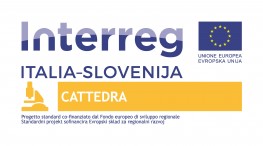
Promoting innovation capacities for a more competitive area
The overall goal of the project was to bring together, share and improve therapeutic methodologies and diagnostic possibilities for pediatric rare diseases. So far, the two pediatric clinical reference centers work independently. The specialized knowledge of the clinical and research centers has been transferred to major companies in the "Health" sector in the Program area.
The so-called "rare diseases" do not receive adequate attention from the scientific community and the pharmaceutical industry. Many of these diseases occur in pediatric age and require continuous diagnostic and therapeutic efforts to improve the quality of life of affected children and to minimize the socio-economic impact on families and the health care system.
Established clinical and scientific expertise already exists in the Program Area, particularly in the cross-border axis between IRCCS Burlo Garofolo in Trieste and the Pediatric Clinic of the University of Ljubljana, which were already collaborating in research on some rare diseases such as immune-mediated inflammatory diseases. Up to the project start date, the following were still lacking: a) patient-centered diagnostic methods capable of defining specific individual disease profiles and targeted treatments; b) widespread local knowledge of diagnostic and therapeutic possibilities in this area; and c) efficient tools for sharing knowledge/results of research, particularly towards primary care physicians, hospital physicians and patient associations. The CATTEDRA project addressed these shortcomings by bringing together clinical centers, research centers and companies.
There were two outcomes of the project. The first was the transfer, integration and sharing of diagnostic and therapeutic data on therapies. To achieve this outcome there was close cooperation between "scientific" and "corporate" partners, in line with the output indicator for IP 1.b. This outcome has strengthened cooperation between two key pediatric entities, and has also provided data and guidelines on common treatment protocols useful to hospitals/physicians/health workers caring for children with immune-mediated diseases.
The second outcome was the development of innovative diagnostic tests developed by bringing together the experiences of Burlo and UCKLJ with technical support from COBIK. Also for this outcome there was close collaboration between public and private partners to transfer useful knowledge from clinical and research centers to companies, contributing to the output indicator of the CO26 program. The feasibility study of new shared diagnostic tests enabled the foundation for new cross-border collaborations, but also stimulated Italian and Slovenian biomedical companies to collaborate with research institutions, particularly in the field of in vitro diagnostics.
Lead Partner
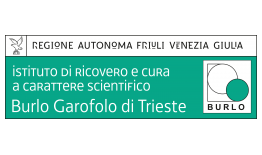
Project partner 1
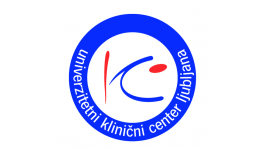
Project partner 2
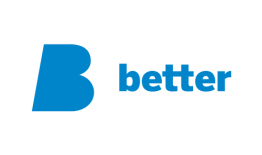
Project partner 3

Project partner 4
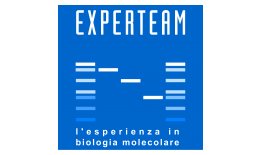
| POSTER CATTEDRA 70x100 cm - ITA 70x100_CATTEDRA_ITA.pdf ( 323 bytes, published on 8 January, 2021 - 09:54 ) | |
| POSTER CATTEDRA A3 - ITA A3_CATTEDRA_ITA.pdf ( 243 bytes, published on 30 April, 2021 - 12:28 ) | |
| Communication kit for the final event Communication kit.JPG ( 5 bytes, published on 12 October, 2023 - 11:36 ) | |
| Communication kit for the final event Communication kit 2.JPG ( 3 bytes, published on 12 October, 2023 - 11:36 ) | |
| CATTEDRA_Project's events The events of Cattedra Project.pdf ( 189 bytes, published on 13 October, 2023 - 15:10 ) | |
| CATTEDRA_press review Press review.pdf ( 7 bytes, published on 13 October, 2023 - 15:10 ) | |
| CATTEDRA_Paediatric rheumatology_Scientific publication Cattedra Project for paediatric rheumatology.pdf ( 689 bytes, published on 13 October, 2023 - 15:10 ) | |
| CATTEDRA_Monocyte valecuoles_Scientific publication Monocyte vacuoles 27.1-2_AT.pdf ( 133 bytes, published on 13 October, 2023 - 15:10 ) |
THE CATTEDRA PROJECT, CONTEXT, RESULTS, AND FUTURE
The CATTEDRA project was a cross-border collaboration project whose specific objective was to address a common challenge of the Program Area, rare diseases in childhood. The project has networked the two main clinical centers of the Program Area, private companies and private research centers which, during implementation, have committed themselves to two work packages. The first was related to the creation of a joint database containing clinical, therapeutic and diagnostic information on four rare pediatric diseases considered crucial in the Program Area: juvenile dermatomyositis, systemic lupus erythematosus, juvenile idiopathic arthritis, autoinflammatory and immunodysregulatory diseases. The fundamental output of this activity is precisely the joint database, created under the coordination of the Better company, with the help of all the partners, in particular the Burlo Garofolo pediatric clinical centers of Trieste and Univerzitetni klinični center Ljubljana. The output created has made it possible to achieve various results, including the sharing of information on patients and the initiation of clinical, therapeutic and diagnostic harmonization paths between the two main pediatric centers of the Program Area. The second package of activities instead concerned two feasibility studies of jointly developed diagnostic kits for rare diseases in the pediatric age group. The partners followed two different paths, depending on the enabling technology identified: on the one hand NGS (Next Generation Sequencing) technology and on the other ELISA (Enzyme-Linked Immunosorbent Assay) technology through the development of biosensors. Ultimately, the partners have had very encouraging results including the first tests of samples taken from patients for the study conducted using NGS technology, while as regards the kits based on biosensors, the foundations of knowledge have been laid on which to base future developments.
MAIN PROJECT OUTPUTS
Jointly developed database of rare diseases of children
The first of the two technical WPs of CATTEDRA was dedicated to the realisation and implementation of a database of rare diseases of children jointly developed by the partners, combining the health informatics know-how of BETTER, the clinical and therapeutic knowledge of the Burlo and Univerzitetni klinični centre Ljubljana, and with the support for the diagnostic part of COBIK and Experteam.
The database, which will be used by the institutes even after the end of the project, contains important information that enables doctors and researchers in the Programme Area to compare and contrast clinical, therapeutic and diagnostic pathways.
Feasibility studies of diagnostic kits
The second technical WP was devoted to the partners' laboratory activities to study the feasibility of two diagnostic tests for rare diseases in children, one based on RNA and the other on DNA. On the one hand, activities were carried out using Next Gen Sequencing (RNA), and on the other hand, efforts were made to develop bionsensors based on the ELISA assay. The work was carried out in parellelo, divided according to the thematic affinities of the partners, Experteam for the NGS strand and CO BIK for the bionsensor expertise. Both strands produced the desired results, with the NGS strand achieving results that even exceeded expectations with the first clinical trials.
COMMUNICATION STRATEGIES
The CATTEDRA project aimed to raise the awareness of various target groups in the Programme Area with regard to paediatric rare diseases. These diseases do not get the attention they deserve, not only because of the health problems of the youngest children, but also because they are economically very costly for the treatment centres in the Programme Area. The CATTEDRA project is considered to have contributed to the change of approach in the cross-border area towards these diseases, thanks to the increase in their knowledge through dissemination activities, in particular through articles in newspapers and radio interviews with project participants.
Awareness-raising of health professionals on the clinical manifestations, diagnostic modalities and therapeutic options of immune-mediated diseases
The communication activities carried out to achieve this result were manifold: from articles in specialised newspapers to the final event, which was strongly focused on the target group of Programme Area doctors.
Raising awareness among the general public about rare diseases in children and their incidence in the Programme Area
The CATTEDRA project was successfully disseminated to the general public through social media, the final event, but especially through articles in online newspapers and local newspapers and radio broadcasts. It is important to mention the publication in the 'Platinum' supplement of Sole24Ore.
Informing companies in the health sector in order to promote new diagnostic possibilities and stimulate new collaborations between research institutions and industry
It was not possible to actively involve Health companies in customised events as the scientific results, useful for dissemination, only arrived in the last months of the project. However, it is considered that the target group was reached thanks to the dissemination activities carried out, as they were very general and wide-ranging.
Creation of video interviews with partners to report on the results of the Cattedra project
A YouTube channel dedicated to the project was created where 22 videos are available in all project languages marked with the hastag #CattedrainaNutshell.
The videos can be viewed from the following address: https://www.youtube.com/@cattedra-interregitaslo2159